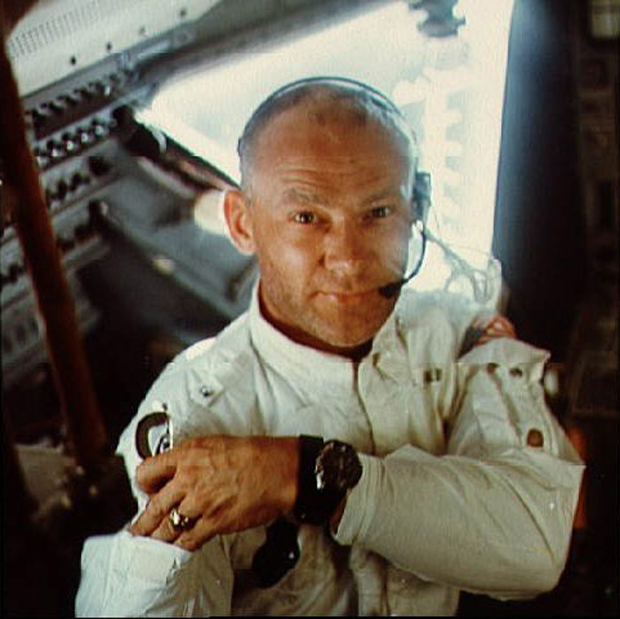Buzz Aldrin: Put Humans on Mars By 2031

The moonmay have been the entire world for a day for Apollo 11 astronaut Buzz Aldrin 40years ago, but today he hopes the United States and the world set their sightson a far grander goal: Spreading humanity to Mars and perhaps asteroids andcomets.
But NASA?splan to replace its three aging space shuttles with Orion capsules to carryastronauts to the moon by 2020 may not justify its $35 billion cost if it stopsthere, said Aldrin, one of the first humans to set foot on the moon during the Apollo11 landing on July 20, 1969.
Instead,the United States can aid international partners in exploring the moon and freeup its own spaceflight resources to develop systems for even more ambitiousgoals, he told in an interview.
?While theinternational explorers, with our help, are going to themoon, we can develop the long-duration life support systems for otherthings,? said Aldrin, 79. ?Flying by a comet, visiting an asteroid andstation-keeping with it.?
Marswithin reach
With aninternational base on the moon and vital technologies like in-space refueling,Aldrin envisions an ambitious series of expeditions to send astronauts on adeep space mission to visit the asteroid Aphophis when it swings near Earth in2021. A temporarily manned base on the Mars moon Phobos could follow, he added.
?By thattime, we?d be ready to put people in a gradual permanence on Mars by 2031,?Aldrin said. ?That, in a nutshell, is what I really think we should be doing.?
Breaking space news, the latest updates on rocket launches, skywatching events and more!
NASA?scurrent transition from the spaceshuttle to Orion is a huge step backward, Aldrin said. The shuttle?s maynot have lived up to its initial expectations, but its ability to haul tons ofcargo to orbit and land on a runway is a capability that should not be lost inorder to replace it with something faster and cheaper, he stressed.
?Whathappens to U.S. space global leadership if everything is going to be done onthe cheap and we?re not going to think ahead, and we?re going back to the moonfor some reason that really won?t justify the cost of human habitation,? hesaid.
The UnitedStates should ?do the things that this nation can do and strive towardmaintaining globally space leaderships. And that means lifting bodies, runwaylanders and not going back to the moon, because we?ve been there,? Aldrinadded.
The moonat heart
While thefuture of American spaceflight remains to be seen, Aldrin said he takes comfortknowing that the history-making Apollo11 moon landing still resonates today.
?I?m kindof glad it does,? he said. ?Whatever we do in space is not on the front pageunless there?s something going wrong or it?s highly unusual. And it doesn?tcapture the budget discussion.?
Aldrin andNeil Armstrong spent a day on the lunar surface and just 2 1/2 hours walkingoutside their Eagle lander. Their crewmate Michael Collins orbited overheadinside the commandmodule Columbia. Five other Apollo moon landings followed.
In thepast, Aldrin has frankly recounted the depression and bout with alcoholism thatfollowed his flight aboard Apollo 11.
Now, 40years after the mission, he said he?s matured considerably since the flight - hislast space mission and has released a new autobiography ?Magnificent Desolation.?In a bid to spark interest in spaceflight in today?s youth ad children, herapped about the moonshot with Snoop Dogg and Talib Kewli, and has a newchildren?s book about space exploration.
The Apollo11 anniversary, he said, is a chance for NASA to remind the American public ofthe country?s technical prowess.
?I do thinkthat it does momentarily keep the public abreast of what we?re doing now, andthey?ll look back,? Aldrin said. ?Of course it?s been a long time, so manypeople weren?t alive when those things happened, and those that were are, Iguess, maturing a little bit and look back with a bit of nostalgia.?
But themoon, Aldrin added, hasn?t changed.
?Well, itstill looks about the same when I look at it,? Aldrin said. ?But I know inside,it sounds kind of trite, that it?s really not the stranger that it was. It?ssomewhat of a friend now because I?ve been there.?
Aldrin saidhe still vividly remembers that first moonwalk. Armstrong called the viewbeautiful, but it was so much more. Aldrin, instead, saw what described asmagnificent desolation.
?Beautiful,I thought, that?s not quite right,? he said. ?It?s magnificent that we?re here? but what a desolate place this was.?
He stillrecalls the apparent stillness.
?No life,no motion, no air. And just the same uniform color of all the dust thatreflected light differently depending on the angle of the sun and your view,?Aldrin said. ?It just wasn?t a very welcome place at all.?
- New Video - Apollo 11: The Eagle Has Landed
- Video - NASA's Constellation Journey Begins: Part 1, Part 2
- SPACE.com Special Report - THE MOON: Then, Now, Next
Fortyyears after astronauts first set foot on the moon, SPACE.com examines whatwe?ve done since and whether America has the right stuff to get back to themoon by 2020 and reach beyond. For exclusive interviews and analysis, visitSPACE.com daily through July 20, the anniversary of the historic landing.

Tariq is the award-winning Editor-in-Chief of Space.com and joined the team in 2001. He covers human spaceflight, as well as skywatching and entertainment. He became Space.com's Editor-in-Chief in 2019. Before joining Space.com, Tariq was a staff reporter for The Los Angeles Times covering education and city beats in La Habra, Fullerton and Huntington Beach. He's a recipient of the 2022 Harry Kolcum Award for excellence in space reporting and the 2025 Space Pioneer Award from the National Space Society. He is an Eagle Scout and Space Camp alum with journalism degrees from the USC and NYU. You can find Tariq at Space.com and as the co-host to the This Week In Space podcast on the TWiT network. To see his latest project, you can follow Tariq on Twitter @tariqjmalik.
